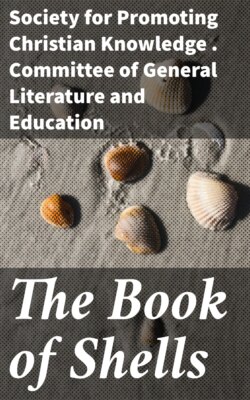Читать книгу The Book of Shells - Society for Promoting Christian Knowledge . Committee of General Literature and Education - Страница 4
На сайте Литреса книга снята с продажи.
CLASS MOLLUSCA.
ОглавлениеTable of Contents
In noticing the animal of a univalve shell, the part which more readily attracts the attention is the mantle, which covers the head of the creature, something like a hood; it varies much in form and size in different genera. The eyes, which in the sepia are amazingly large and brilliant, are very minute in most of the other tribes, although they are frequently visible, and would appear, from their formation, to be of little use as organs of sight; indeed, it is supposed, that in the snail they are devoted to the sense of smelling.
The organs of motion in the Mollusca, according to their different form and position, give names to most of the orders; these consist of muscular expansions of the body, by means of which the animal swims or drags itself along the ground. The gills, or breathing apparatus, are situated internally, and communicate with the air or water, by means of a small canal opening outwardly. The mouth is usually concealed from view when the creature is at rest; in some, this organ is furnished with a hard substance, which supplies the place of teeth, while, in others, it is in the form of a projecting tube. The greatest portion of these creatures are produced in the water, the tribes that inhabit that element, exceeding by far those that are to be found upon the land.
The Molluscous animals have been separated into the five following Orders:—
1. Heteropoda, (with feet, or organs of motion,
not uniform in all species.)
2. Cephalopoda, (with feet, or organs of motion,
attached to the head.)
3. Trachelipoda, (with feet, or organs of motion,
attached to the neck, near the gills.)
4. Gasteropoda, (with feet, or organs of motion,
attached to the stomach.)
5. Pteropoda, (with feet, or organs of motion,
like wings.)
